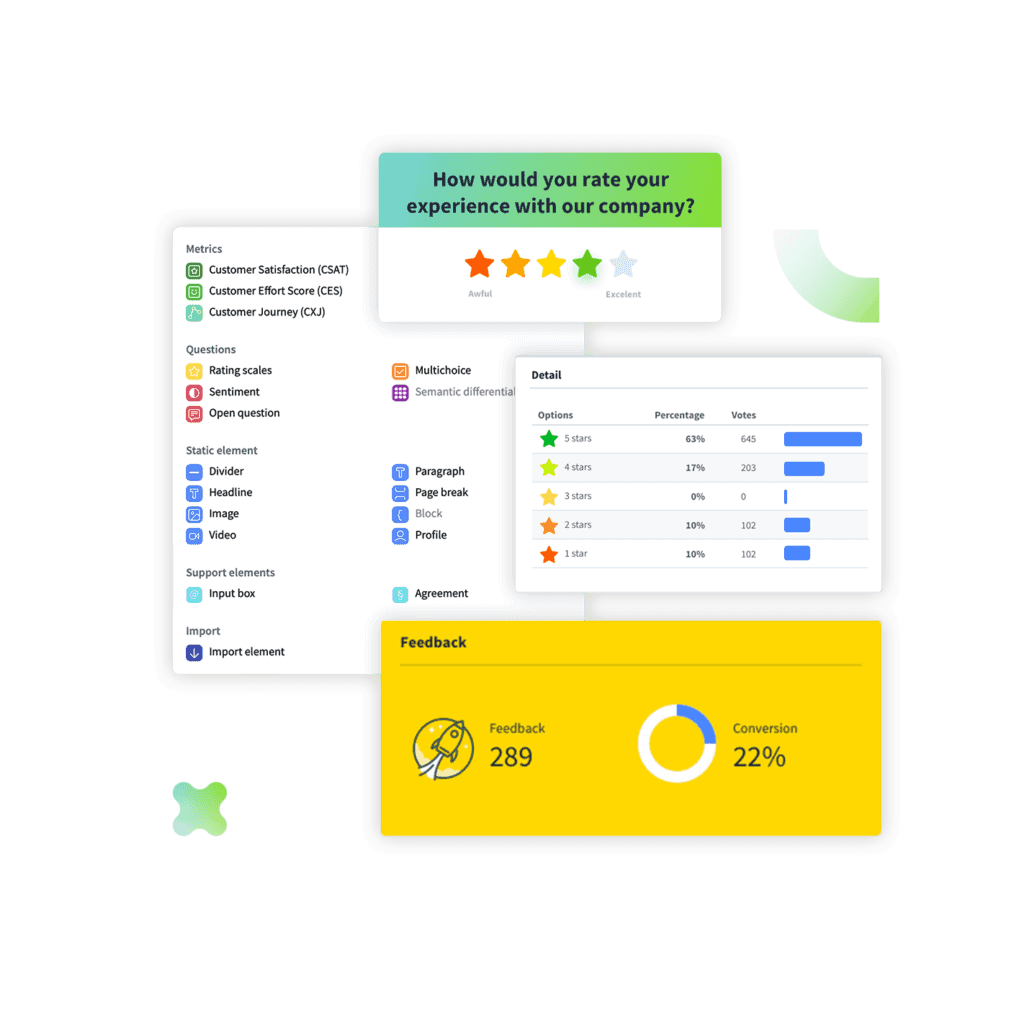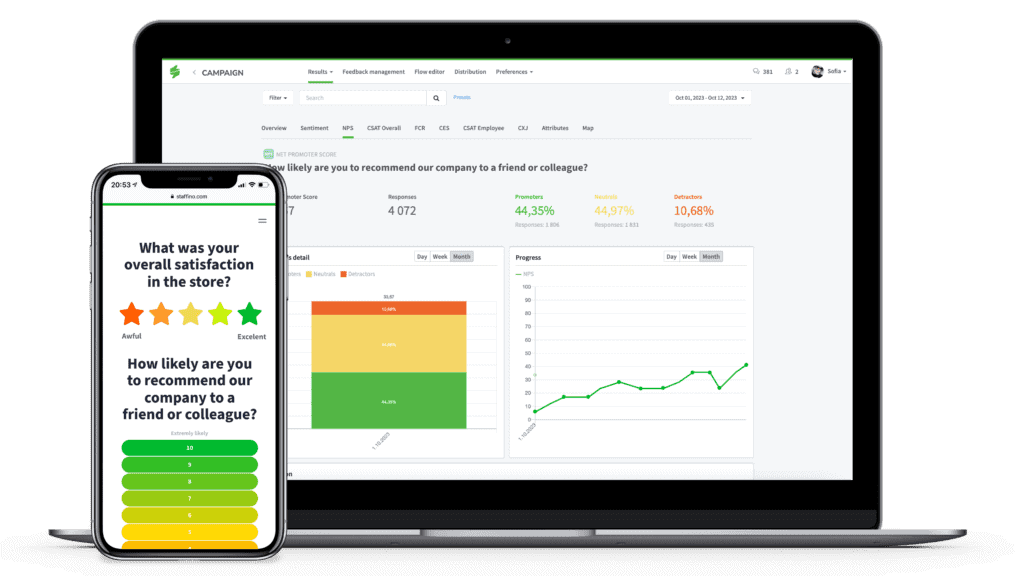In today’s digital age, user experience can make or break a business. As consumers engage more with digital platforms, understanding their experience is essential to building loyalty and enhancing satisfaction. This is where digital experience analytics (DXA) comes into play—a critical tool for businesses seeking to understand every interaction a user has with their digital interfaces.

This article dives into what digital experience analytics is, how it works, and how a digital experience analytics platform can improve the customer experience. We’ll also explore the tools and techniques businesses can use to turn visitor interactions into actionable insights.
What is Digital Experience Analytics?
Digital experience analytics refers to the technology and methodology behind tracking, analysing, and interpreting user behaviour on digital platforms like websites, apps, and online portals.

Unlike traditional analytics, which focuses on metrics like page views or session length, digital experience analytics provides a deeper understanding of the qualitative aspects of a user’s journey, such as where they encounter friction, how they navigate, and what influences their decisions.
Core Aspects of Digital Experience Analytics
1. User Journey Mapping
A customer journey map tracks each step a visitor takes, highlighting common paths and potential points of friction.
2. Interaction Analysis
Looks at specific actions, such as clicks, scrolls, and taps, providing insights into engagement and usability.
3. Behavioral Segmentation
Analyses visitor segments based on actions, demographics, or behaviours, enabling more targeted improvements.
With these insights, you can make data-backed decisions to enhance usability and optimise digital experiences for higher satisfaction and conversion rates.
Why is Digital Experience Analytics Essential?
In a competitive market, understanding digital customer experience analytics is no longer optional; it’s a necessity. Knowing exactly how customers interact with digital platforms allows businesses to provide smooth, intuitive, and engaging experiences, ultimately leading to better customer retention and loyalty.

Without a robust digital experience analytics platform, companies risk making assumptions about customer needs, which can lead to a misalignment between business objectives and user expectations. Through digital customer experience analytics, you can get a concrete answer to how to improve your customer experience by identifying and addressing specific pain points.
Key Benefits of a Digital Experience Analytics Platform
To leverage digital experience analytics effectively, you need a comprehensive CX platform that consolidates data, offers actionable insights, and facilitates real-time monitoring. Let’s look at some of the benefits that a dedicated digital experience analytics platform provides:

1. Enhanced Customer Satisfaction
By analysing user interactions, you can identify ways to improve the customer experience, from simplifying navigation to speeding up load times.
2. Proactive Issue Resolution
Analytics platforms often include alerts for sudden drops in key metrics like satisfaction scores or engagement rates. This enables your team to investigate and resolve issues before they escalate.

Get Actionable Insights with Closed Loop Feedback Management
With Staffino, you'll never leave a customer unhappy again! Streamline the process of collecting and responding to feedback, identify areas of improvement, and make sure that customer issues are addressed quickly and effectively.
3. Data-Driven Decision-Making
Instead of relying on gut feelings, businesses can make informed choices based on actual user behaviour and preferences. For example, if analytics show that users frequently abandon a specific page, it may be worth re-evaluating that page’s content and design.
4. Personalised Experiences
Digital experience analytics supports behavioural segmentation, allowing you to tailor content and offers to individual user groups. Personalisation has been proven to increase engagement and satisfaction rates significantly.
5. Increased Conversions
By understanding and improving the digital journey, you can reduce bounce rates and improve conversions. For instance, insights into where users drop off in the purchase process can help refine the customer journey for better outcomes.
How Digital Experience Analytics Improves Customer Experience
Improving customer experience begins with understanding the intricacies of user interactions and identifying points of friction. Here are some ways to improve customer experience using digital experience analytics:

1. Streamlining Navigation
Data can reveal when users struggle to find information or get lost in complex navigation menus. Simplifying site structure based on user behaviour ensures smoother navigation.
2. Optimising Content
By tracking the content that users spend the most time on, you can highlight popular topics, improve underperforming sections, and ensure the content aligns with user interests.
3. Reducing Load Times
Slow load times can lead to frustration and increase bounce rates. Analytics platforms can track page speed and highlight pages that need optimisation for a faster experience.
4. Personalising the User Journey
With insights into visitor behaviour, you can craft personalised customer journeys that cater to individual preferences. For instance, recommending products based on past views or purchases enhances the digital experience.
5. Enhancing Accessibility
Digital experience analytics helps identify areas where users with accessibility needs may encounter barriers. Optimising these areas creates an inclusive experience, building customer loyalty and satisfaction.
Key Metrics in Digital Experience Analytics
A robust digital experience analytics platform should provide customer survey tools offering a comprehensive view of both quantitative and qualitative metrics. Here are some key metrics to track:

1. Customer Satisfaction Score (CSAT)
CSAT measures how satisfied users are with their experience, offering immediate insights into user perception.
2. Customer Effort Score (CES)
Evaluates how easy or difficult it is for users to complete specific actions, such as making a purchase or submitting a form.
3. Net Promoter Score (NPS)
NPS measures users’ willingness to recommend the platform or service, serving as a strong indicator of overall satisfaction and loyalty.
4. Engagement Rate
Tracks how users interact with specific elements, such as links, videos, or buttons. High engagement rates often indicate effective, engaging content.
5. Session Replay
Records user sessions, allowing teams to watch interactions and identify friction points directly. This qualitative data offers deeper insights than numbers alone.
By monitoring these customer experience metrics, you can measure the effectiveness of your digital platform and make continuous improvements to enhance user experience.

Boost Customer Experience with NPS, CSAT & CES
Get the most accurate and actionable insights into your customer satisfaction with Staffino's CX metrics. With automated surveys and effective reporting, you can quickly gain valuable insights into your customer journey.
How to Get Started with Digital Experience Analytics
Here’s a step-by-step guide to implementing a digital experience analytics solution:
1. Identify Key Goals
Determine what you want to achieve, whether it’s improving customer satisfaction, increasing conversions, or enhancing customer retention management.
2. Choose a Platform
Select a digital experience analytics platform that aligns with your objectives. Look for one that integrates easily with your existing systems and offers comprehensive support for analysis, client satisfaction survey tools for feedback collection, and customisation.

3. Set Up and Customise CX Metrics
Establish baseline metrics like CSAT, NPS, and CES, and configure the platform to track these according to your business needs.
4. Monitor and Analyse
Use a digital customer satisfaction survey to track your CX metrics in real time. Monitor changes, analyse patterns, and identify any emerging issues.
5. Iterate and Improve
Digital experience analytics is an ongoing process. Use insights to make informed changes and continuously test new ideas to improve customer experience.
How Staffino Can Support Your Digital Experience Analytics
Staffino’s AI-powered digital experience analytics platform offers businesses a sophisticated way to collect, analyse, and act on digital feedback. With features like real-time data analytics, automated feedback categorisation, and behaviour insights, Staffino helps companies understand their digital interactions at every level. By harnessing AI-driven insights, Staffino enables proactive experience improvement, helping you not just to meet but exceed customer expectations.
Turn raw data into actionable insights, closing the gap between digital engagement and customer satisfaction. Start making sense of every visitor experience with a comprehensive solution that’s built to support your journey to a customer-centric digital presence. Book a free demo with our team below!

Get a First-Hand Experience Today!
Staffino is the perfect tool for creating engaging surveys, tracking performance, responding to customer feedback, and rewarding top employees. Get started today with our FREE demo!









